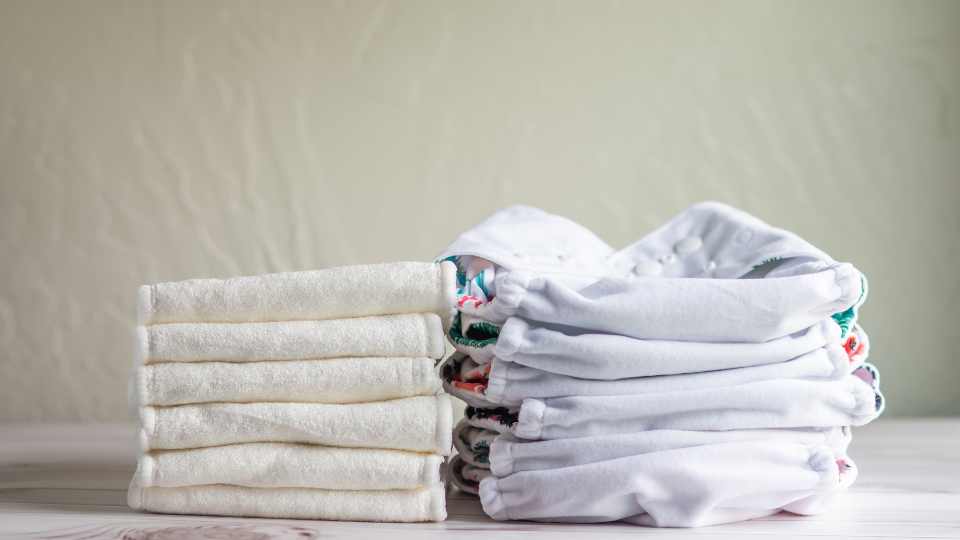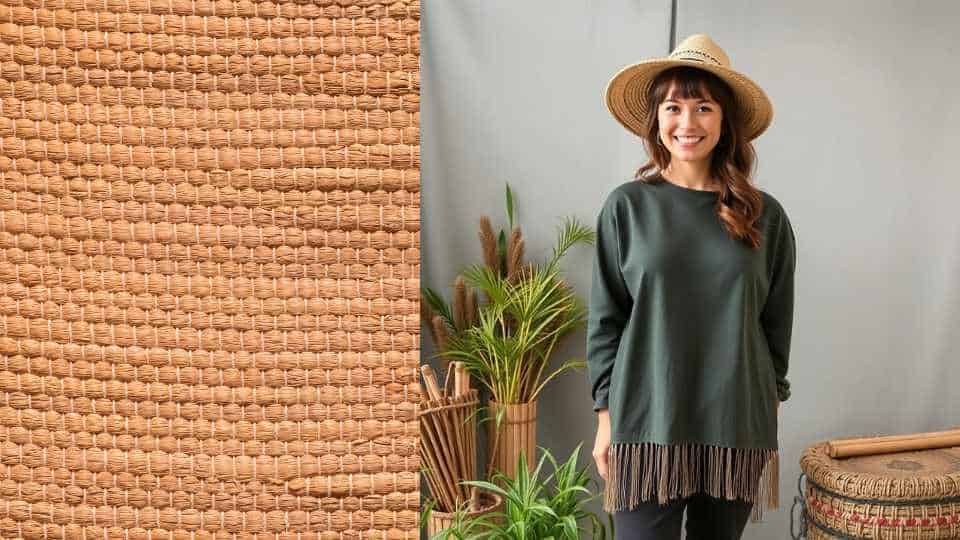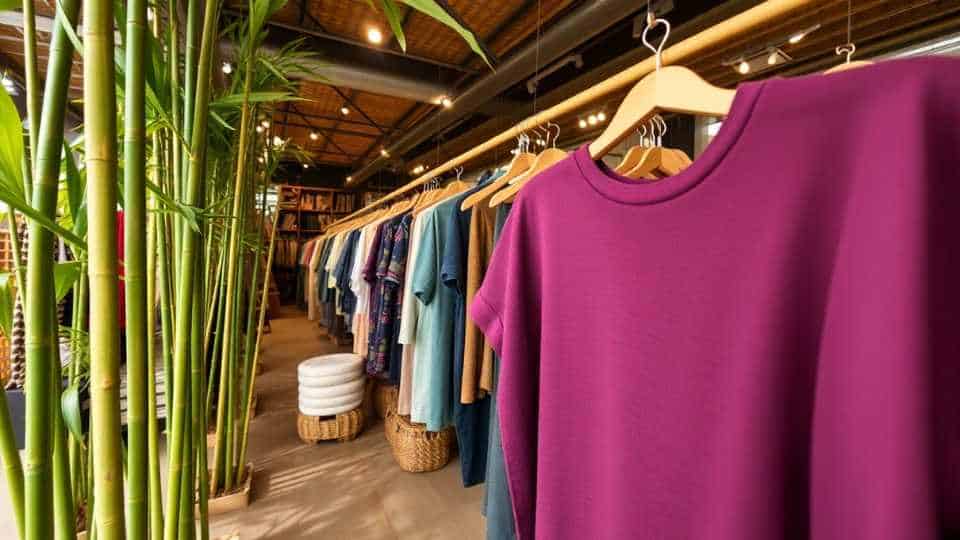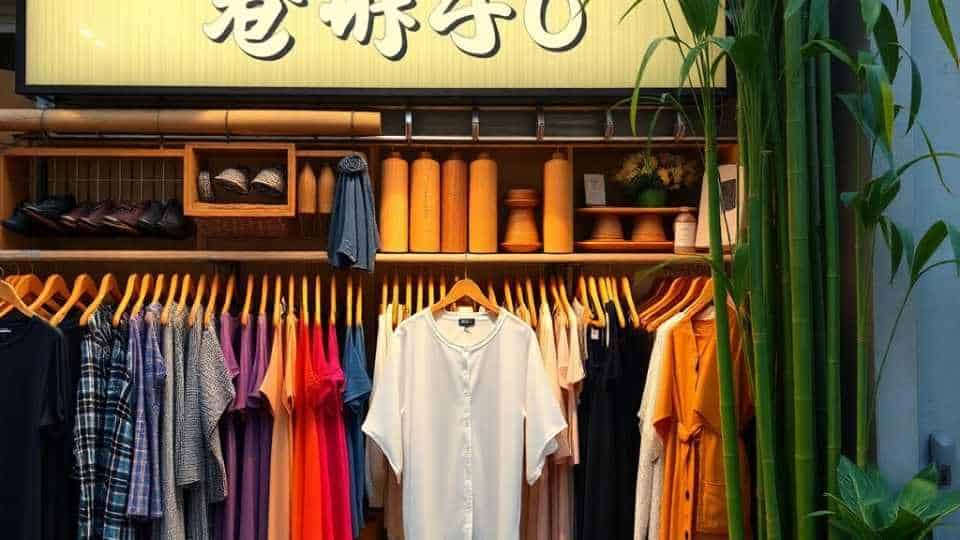As the fashion industry increasingly embraces sustainability, bamboo clothing is emerging as a fashionable and environmentally friendly alternative.
With its soft texture and natural antibacterial properties, bamboo fabric resonates with consumers who prioritize both comfort and environmental responsibility.
This guide aims to explore the numerous advantages of initiating a bamboo clothing business, examine current market trends, and outline practical steps for launching one’s own venture.
Whether you are an aspiring entrepreneur or simply interested how to start a bamboo clothing business, this guide will offer valuable insights for your journey.
What is Bamboo Clothing?

Bamboo clothing represents a significant segment of sustainable fashion, utilizing bamboo fibers recognized for their eco-friendly attributes and versatility. As a natural fabric, bamboo offers numerous advantages over traditional materials, including exceptional softness, breathability, and moisture-wicking properties.
This innovative textile not only provides comfort against the skin but also plays a crucial role in fostering a more sustainable clothing industry. Given the growing awareness regarding the environmental consequences of conventional fashion, bamboo fabric has emerged as a favored choice among eco-conscious consumers seeking both style and sustainability.
The production process of bamboo clothing has garnered attention for its minimal environmental impact, requiring substantially less water and fewer chemicals compared to conventional cotton or synthetic fibers.
Furthermore, ethical sourcing practices have become increasingly significant, and bamboo fabrics excel in this regard, typically being sourced from sustainably managed forests. This commitment to environmental stewardship not only mitigates pollution but also supports biodiversity.
As consumers increasingly prioritize eco-friendly materials in their wardrobes, the appeal of bamboo textiles continues to rise, establishing itself as a compelling alternative to synthetic and petroleum-based fabrics.
Benefits of Starting a Bamboo Clothing Business

Launching a bamboo clothing business presents numerous advantages, particularly in a market that increasingly prioritizes sustainability and ethical practices. By capitalizing on the rising demand for eco-friendly materials, entrepreneurs can develop a brand that appeals to environmentally conscious consumers who value both style and ecological responsibility.
Bamboo fabric is distinguished by its unique attributes, including durability, softness, and biodegradability, positioning it as an exceptional option for those seeking to carve out a niche in sustainable fashion.
Benefits of Bamboo Clothing
|
Benefit |
Description |
|---|---|
|
Softness |
Comfortable and gentle on the skin. |
|
Breathability |
Allows air circulation, keeping the body cool. |
|
Durability |
Long-lasting and resistant to wear. |
|
Hypoallergenic |
Suitable for sensitive skin types. |
|
Antibacterial |
Naturally resists odors and bacteria. |
|
Eco-Friendly |
Sustainable and renewable resource. |
Sustainable and Eco-Friendly Materials
Bamboo fabric is emerging as a prominent example of eco-friendly materials within the sustainable fashion industry, recognized for its minimal environmental impact and renewable properties. The process of converting bamboo into fabric is designed to minimize resource consumption and promote ethical sourcing, ensuring that manufacturing practices are in alignment with sustainability objectives.
As consumers increasingly seek organic textiles, bamboo’s rapid growth cycle and its ability to thrive without the use of harmful pesticides render it a favorable alternative to traditional fabrics.
This remarkable plant can grow up to three feet per day, making it one of the fastest regenerating resources available, significantly reducing land use compared to cotton or synthetic fibers. The method of harvesting bamboo is non-invasive, preventing soil erosion and promoting biodiversity within its ecosystem.
Unlike many other textiles, bamboo fabric is biodegradable, thereby minimizing waste in landfills.
By opting for bamboo, consumers not only experience luxurious softness and breathability but also actively contribute to a movement toward more sustainable and ethical fashion choices, reflecting a commitment to both environmental preservation and social responsibility.
Growing Demand for Sustainable Fashion
The increasing demand for sustainable fashion signifies a notable transformation in consumer behavior, as more individuals prioritize ethical sourcing and eco-conscious choices in their purchasing decisions. As awareness of the environmental consequences of fast fashion proliferates, consumers are increasingly gravitating toward brands that provide products made from sustainable materials, such as bamboo clothing.
This trend not only benefits the environment but also presents valuable opportunities for businesses seeking to align their offerings with contemporary consumer values and fashion trends.
Market research reveals that diverse demographic groups, particularly millennials and Gen Z, are becoming more discerning regarding their purchases. These consumers actively seek out brands that exhibit a commitment to social responsibility, making it imperative for companies to comprehend the values of their target audience.
By aligning with eco-conscious trends, brands can cultivate deeper connections with consumers, thereby fostering brand loyalty and advocacy. The incorporation of sustainable practices enables businesses to not only reduce their environmental impact but also to enhance their reputation in a competitive marketplace, further driving demand for ethically produced fashion.
Startup Costs for Bamboo Clothing Business
|
Expense Category |
Estimated Cost Range |
|---|---|
|
Market Research |
$500 – $2,000 |
|
Material Sourcing |
$1,000 – $5,000 |
|
Equipment |
$1,500 – $10,000 |
|
Marketing |
$500 – $3,000 |
|
Website Development |
$300 – $2,000 |
|
Miscellaneous |
$200 – $1,000 |
|
Total Estimated Cost |
$4,000 – $23,000 |
Market Analysis for Bamboo Clothing

Conducting a comprehensive market analysis for bamboo clothing is critical for understanding consumer behavior and identifying potential opportunities within the sustainable fashion sector. This process encompasses detailed market research that elucidates the preferences of eco-conscious consumers as well as the competitive landscape in the clothing industry.
By clearly defining the target audience and analyzing competitors, brands can effectively position themselves and customize their offerings to align with emerging trends in sustainable fashion.
Target Market and Competition
Identifying the target market for bamboo clothing is essential for the success of any sustainable fashion brand, as it enables businesses to tailor their offerings and marketing strategies effectively. The target audience generally comprises eco-conscious consumers who prioritize sustainability and are inclined to invest in quality products that align with their values.
Conducting a competitive analysis is instrumental in identifying key players within the bamboo clothing niche, which can range from boutique stores to e-commerce platforms. This analysis provides valuable insights into market dynamics and informs new entrants regarding their positioning.
Along with understanding the primary demographic, brands should also investigate secondary segments, such as families seeking environmentally friendly clothing options and millennials who increasingly favor ethical fashion choices. Analyzing the competition not only underscores effective branding techniques but also uncovers gaps in the market that can be strategically leveraged.
Effective sales channels, whether through direct-to-consumer websites or partnerships with eco-friendly retail outlets, are crucial for reaching the intended audience. Ultimately, remaining attuned to consumer preferences—such as fabric feel, style preferences, and price sensitivity—significantly enhances market penetration and fosters brand loyalty in this expanding sector.
Comparison of Bamboo vs. Traditional Fabrics
|
Feature |
Bamboo Fabric |
Traditional Fabrics (Cotton/Synthetic) |
|---|---|---|
|
Growth Rate |
Fast (up to 3 ft/day) |
Slower growth |
|
Water Use |
Low |
High |
|
Chemicals |
Minimal |
Often high (pesticides, dyes) |
|
Biodegradable |
Yes |
Varies (synthetics are not) |
|
Comfort |
Very soft |
Varies (depends on fabric type) |
Steps to Start a Bamboo Clothing Business

Initiating a bamboo clothing business entails a series of strategic steps designed to establish a robust foundation and facilitate long-term success within the sustainable fashion sector.
Conducting thorough market research and developing a comprehensive business plan are critical phases in creating a brand that appeals to eco-conscious consumers.
Furthermore, effective product development and a well-defined marketing strategy are essential for distinguishing the brand and successfully engaging the target audience, ultimately fostering business growth and sustainability.
1. Research and Develop a Business Plan
The initial step in launching a successful bamboo clothing business is to conduct thorough market research and develop a comprehensive business plan, which acts as a strategic roadmap for the venture.
A well-researched plan details the business model, target market, competitive analysis, and funding options, ensuring preparedness to navigate the challenges of the sustainable fashion industry.
By grasping the nuances of the bamboo clothing market, one can effectively strategize their entry and address critical components of the business plan.
This planning process should also include financial projections, enabling the forecasting of income and expenses while identifying break-even points.
Understanding potential funding sources, such as grants and loans, is equally essential for establishing financial resilience and addressing initial challenges.
Furthermore, assessing risks associated with operational scalability will aid in navigating uncertainties and adapting to market changes, ultimately enabling the business to grow sustainably and thrive in the competitive landscape of eco-friendly apparel.
2. Source Quality Materials and Suppliers
Sourcing quality materials is essential for any bamboo clothing business, as it ensures that products meet the expectations of eco-conscious consumers while adhering to ethical sourcing principles. Collaborating with reliable suppliers and sourcing agents can facilitate access to high-quality bamboo fabric that aligns with industry standards and certifications for sustainability.
Implementing rigorous quality control measures during the manufacturing process is equally important to maintain product integrity and ensure customer satisfaction.
By developing strategic partnerships with suppliers who prioritize eco-friendly practices, businesses can cultivate a transparent supply chain that enhances trust and loyalty among customers. Conducting thorough research on potential partners, including requesting samples and reviewing their production processes, is vital for assessing their reliability.
In addition, ensuring that suppliers possess relevant certifications, such as the Global Organic Textile Standard (GOTS) or OEKO-TEX, provides assurance of compliance with environmental and safety standards. Ultimately, such due diligence not only elevates product quality but also strengthens brand reputation in a competitive market, making it crucial for long-term success.
Essential Equipment for Bamboo Clothing Production
|
Equipment |
Purpose |
|---|---|
|
Sewing Machine |
For stitching garments. |
|
Fabric Cutter |
For cutting fabric pieces. |
|
Iron/Steamer |
For finishing garments. |
|
Measuring Tools |
For accurate sizing and cutting. |
|
Thread and Notions |
For assembling clothing items. |
3. Establish Production and Distribution Processes
Establishing efficient production and distribution processes is essential for the success of a bamboo clothing business, significantly influencing both cost management and customer experience. A transparent manufacturing process assures quality and aligns with consumer values that prioritize ethical sourcing and sustainability.
By identifying appropriate distribution channels, such as boutique shops or online platforms, brands can effectively reach their target audience while managing inventory with efficiency.
To further enhance these efforts, the integration of robust shipping logistics into operations is imperative. This includes the selection of reliable carriers, optimization of shipping routes, and the utilization of technology to streamline order fulfillment.
Implementing clear return policies will foster trust and encourage customers to make purchases with confidence. Additionally, actively soliciting customer feedback is crucial, as it provides invaluable insights into consumer preferences and pain points, enabling businesses to refine their offerings and enhance overall satisfaction.
Collectively, these strategies contribute to a responsive supply chain that not only reduces costs but also elevates the consumer experience.
4. Create a Brand and Marketing Strategy

Creating a robust brand and a well-defined marketing strategy is essential for distinguishing oneself in the competitive bamboo clothing market. A compelling brand identity that embodies the values of sustainability and ethical sourcing will resonate with consumers, fostering customer loyalty and enhancing brand recognition.
Implementing a comprehensive marketing strategy that includes social media marketing, content marketing, and influencer partnerships can effectively engage the target audience and drive sales.
Integrating storytelling into branding facilitates an emotional connection between the product and the consumer, rendering the offerings relatable and memorable. High-quality product photography is also paramount, as it showcases the unique characteristics of bamboo fabric while reflecting the brand’s ethos.
By focusing on advertisements that highlight genuine customer experiences and testimonials, potential buyers can develop a sense of trust and connection. This holistic approach not only enhances visibility but also positions the brand favorably in the minds of eco-conscious consumers, increasing the likelihood that they will choose it over competitors.
Marketing Channels for Bamboo Clothing
|
Channel |
Description |
|---|---|
|
Social Media |
Engage with customers on platforms like Instagram and Facebook. |
|
Influencer Marketing |
Partner with eco-conscious influencers to promote products. |
|
E-commerce |
Sell directly through an online store or marketplaces like Etsy. |
|
Eco-Friendly Events |
Participate in sustainable fashion shows or local markets. |
Challenges and Tips for Success

Navigating the challenges within the bamboo clothing industry necessitates strategic planning and adaptability, given the continuous evolution of the sustainable fashion market. Entrepreneurs may encounter obstacles such as competition, production costs, and changing consumer preferences; however, with appropriate strategies and insights, these challenges can be effectively managed.
By implementing best practices and remaining responsive to market trends, businesses can position themselves for growth and long-term success in the eco-friendly apparel sector.
Common Challenges and How to Overcome Them
Common challenges in the bamboo clothing industry encompass intense market competition, increasing production costs, and the necessity for continuous innovation in product development. To address these obstacles, businesses must prioritize the establishment of robust relationships with suppliers, invest in technology integration, and remain informed about industry trends.
By employing cost-effective strategies that do not compromise quality, brands can successfully carve a niche within the sustainable fashion sector.
Effective risk management is essential for navigating these challenges. By identifying potential supply chain disruptions at an early stage, companies can formulate contingency plans that mitigate losses and ensure operational continuity.
Forging partnerships with local artisans and communities not only enhances the authenticity of production but also cultivates a deeper connection with the consumer base. Emphasizing community engagement enables brands to incorporate valuable feedback into design processes, fostering a sense of belonging and support for sustainable practices.
Furthermore, adapting to changing consumer preferences and prioritizing eco-friendly materials can distinguish a brand in a competitive marketplace, ultimately driving success.
Tips for Running a Successful Bamboo Clothing Business
To successfully start and operate a bamboo clothing business, it is essential to prioritize customer experience, implement effective marketing strategies, and adopt sustainable practices. Establishing a robust online presence through an e-commerce platform, coupled with active social media marketing, can significantly improve visibility and enhance customer engagement.
Engaging with the community and maintaining transparency will resonate with eco-conscious consumers who prioritize sustainability and ethical sourcing.
Implementing targeted email marketing campaigns can facilitate the cultivation of relationships with customers, keeping them informed about new product launches and special promotions.
Leveraging influencer marketing enables brands to connect with trusted voices within the sustainability community, thereby effectively expanding their outreach.
Moreover, developing socially responsible initiatives, such as partnerships with local charities or the promotion of recycling programs, can strengthen brand loyalty and foster a sense of community.
By integrating these strategies, businesses can create a comprehensive approach that not only meets consumer expectations but also aligns with ethical and sustainable practices.
Read Also: How to Start a Cabin Rental Business
Read Also: How to Start a Business in Upscale Portable Bathrooms
Read Also: How Much Does it Cost to Start a Septic Business
Read Also: How to Start a Bounce House Business
Frequently Asked Questions
What is a bamboo clothing business?
A bamboo clothing business is a company that specializes in creating and selling clothing made from bamboo fibers. Bamboo clothing is known for its softness, durability, and sustainability, making it an increasingly popular choice among consumers.
Why should I start a bamboo clothing business?
Starting a bamboo clothing business allows you to tap into a growing market for sustainable and eco-friendly fashion. It also gives you the opportunity to support ethical and sustainable practices in the fashion industry.
What are the benefits of using bamboo as a material for clothing?
Bamboo is a highly versatile and sustainable material for clothing. It is naturally soft, breathable, and hypoallergenic, making it ideal for sensitive skin. It is also more durable than cotton and has natural antibacterial properties, making it odor-resistant.
How do I source bamboo for my clothing business?
You can source bamboo fabric from textile manufacturers, or you can work directly with bamboo farmers to ensure a sustainable and ethical supply chain. You can also consider using organic bamboo, which is grown without the use of pesticides or chemicals.
Do I need any special equipment to start a bamboo clothing business?
While you may need some specialized equipment for large-scale production, you can start a small bamboo clothing business with basic sewing machines and tools. You may also need to invest in bamboo-specific equipment, such as a bamboo fabric steamer.
How can I market my bamboo clothing business?
You can market your bamboo clothing business through various channels, such as social media, online marketplaces, and physical retail stores. You can also collaborate with sustainable fashion influencers and participate in eco-friendly fashion events to increase brand awareness.








